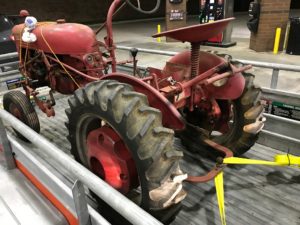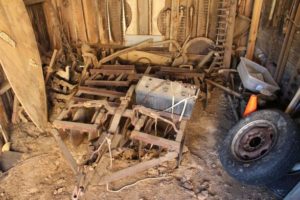I had been looking at Farmall Cub tractors for some time, but I had never been willing to pull the trigger on purchasing one. Too many other time and financial priorities to spend a thousand dollars on a Cub.
On October 22, 2017, I magically convinced my wife and daughter to visit the Stumptown Tractor Club Tractor & Engine Show in Charlotte, NC. While there I pointed at a 1956 Cub Lo-Boy and told my wife I wanted one like that, except I didn’t care if it was a Lo-Boy. The owner of that Lo-Boy said “I have a friend wanting to sell one of those, just a second!” Before I could even protest, I had a phone to my ear with a gentleman telling me he’d sell me his running Cub for $300.00. A price I couldn’t refuse. I hauled it home on October 24th, a 200 mile round trip after work, and that’s where the story begins…
Here is a picture of the Cub strapped into a U-Haul trailer. I didn’t even know enough to realize the Cub had wheel weights on it, which probably made it exceed the capacity of the trailer (and come very close to the towing capacity of the vehicle I pulled it home with).

That is four separate load straps, each rated at 1500 pounds.

The hood wasn’t bolted down, so I have it bungee strapped. Luckily, I have the headlights in a box in the back of the tow vehicle.

It didn’t come with a muffler…

But it runs and has hydraulics!











